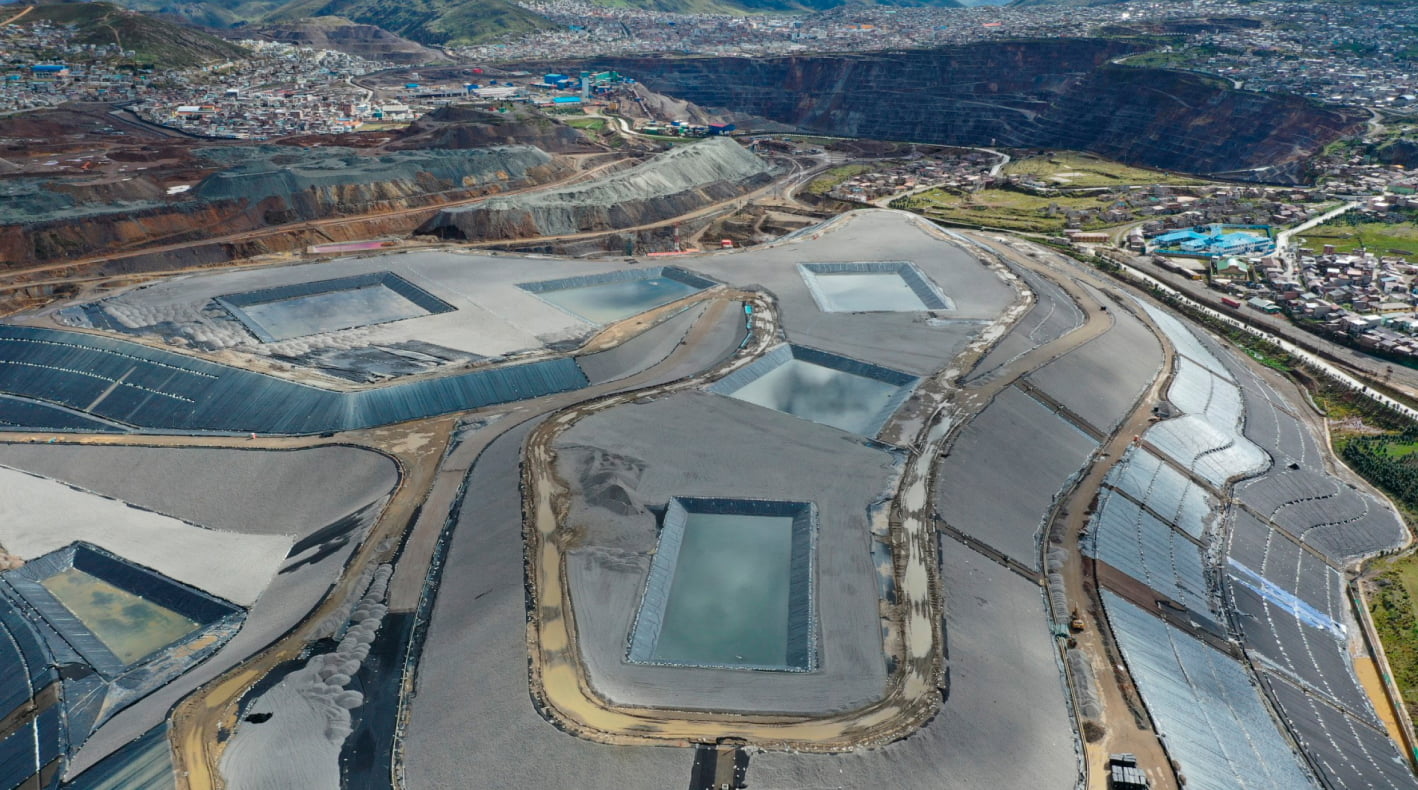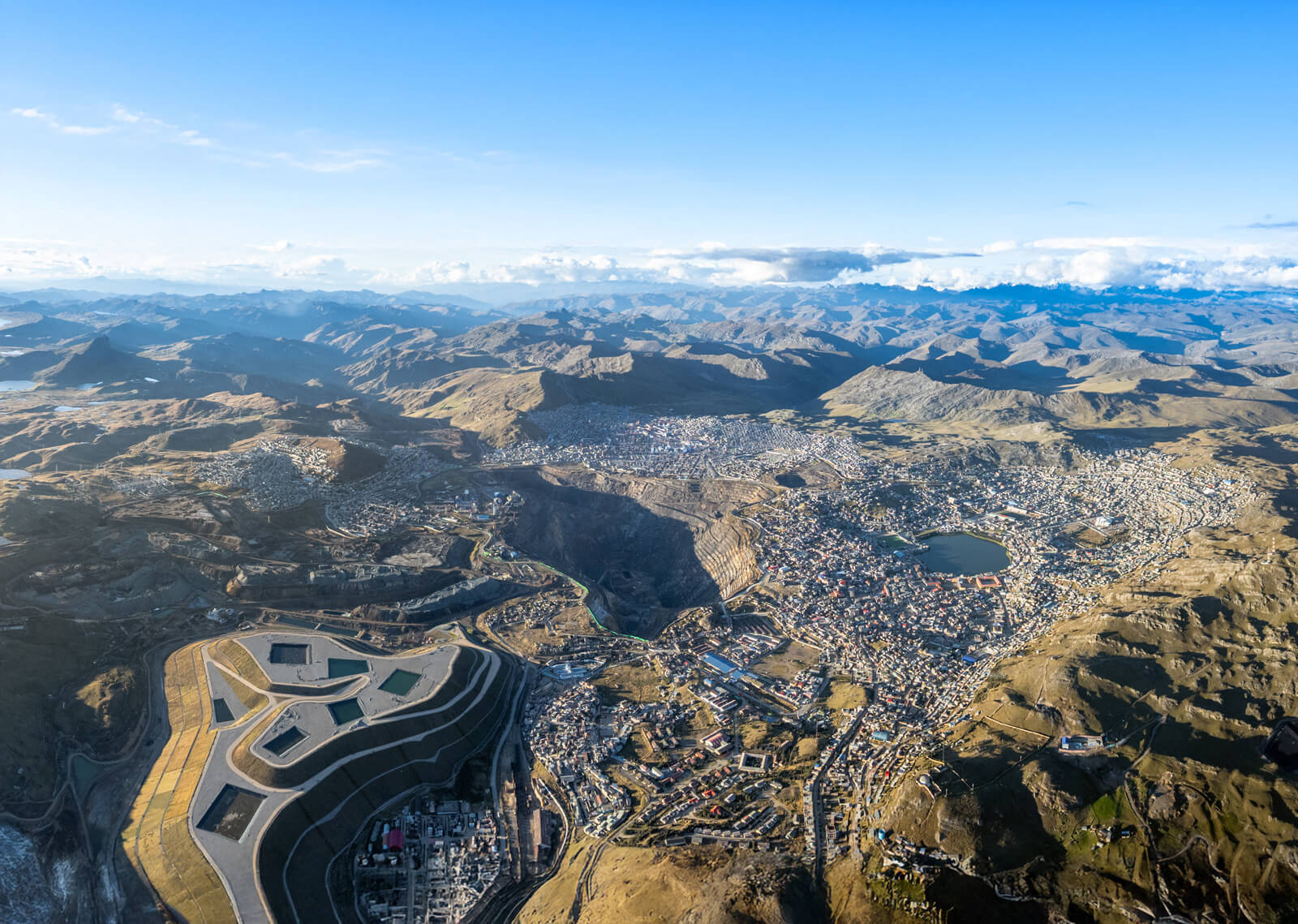Geology
The Excelsior stockpile contains low-grade Zn, Pb, and Ag mineralization from the Cerro de Pasco Mine (underground and Raul Rojas open pit). This deposit is a complex epithermal polymetallic system, classified as a Cordilleran base-metal deposit.
Accumulated between 1970 and 1996, the stockpile consists of fractured rock fragments (average 10 cm, up to 2.5 m) across three terraces. It includes:
- Carbonate (dolomitic) rocks with Zn, Pb, Ag mineralization
- Sulfide-rich quartz–pyrite ore with Fe-oxide near the surface
- Sericitized monzonites/volcanic rocks
Key minerals include sphalerite, tennantite, cerussite, enargite, Ag-rich galena, and sphalerite.








